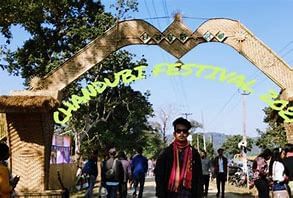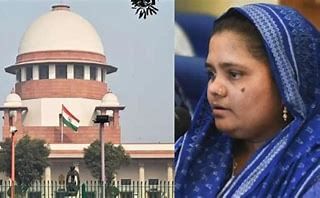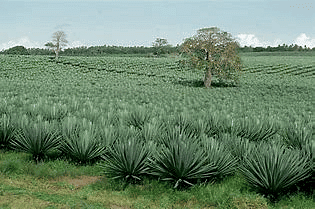UPSC Daily Current Affairs- 9th January 2024 | Current Affairs & Hindu Analysis: Daily, Weekly & Monthly PDF Download
GS-I
Chandubi Festival
Subject: History

Why in News?
Recently, the Chandubi Festival was celebrated along the Chandubi Lake in the state of Assam.
About Chandubi Festival:
- It is organised every year for five days starting from the first day of the New Year along the Chandubi lake, which is situated in the state of Assam.
- The main attractions of the Chandubi festival are the local folk culture, ethnic cuisine, local handloom and dresses, boating, etc.
- The major aim of the Chandubi Festival is to promote eco-tourism in this biodiversity hotspot of Assam.
- Preserving the waterbody, the water level of which has rapidly been lowering over the years, has been the motive for organising the festival every year.
- The festival has been providing an opportunity to generate livelihood to different tribes – Rabhas, Garos, Gorkhas and tea tribes – living in the area by selling different food items and homemade beverages, and traditionally woven attire.
Key points about Chandubi lake:
- It was created during a massive earthquake in the year 1897.
- The name Chandubi is derived from two words where Chand means five and Dubi means sinking in Khasi language.
- This freshwater lake was turned into an economically viable water body that would sustain different communities living around the lake.
- It is a very prosperous wetland of the state that houses numerous species of aquatic flora and fauna.
Source: Hindustan Times
GS-II
Supreme Court Overturns Remission in Bilkis Bano Case
Subject: Polity and Governance

Why in News?
The Supreme Court struck down the remission granted to 11 men convicted in the 2002 Bilkis Bano Gangrape Case.
- Gujarat Government’s Action Deemed Illegal: The court declared the Gujarat government’s decision to release the convicts as illegal, citing jurisdictional issues.
Remission of Sentences: Constitutional Analysis
| Details | |
| What is Remission? |
|
| Constitutional Provisions |
|
| Statutory Power of Remission |
|
| Background of Remission System |
|
| Latest MHA Guidelines |
|
| Eligibility for Special Remission |
|
| Exclusions from the Scheme |
|
Core Issue before the Court
- Question of Authority: The central issue was whether the Gujarat government had the authority to issue remission orders for the convicts.
- Jurisdictional Clarification: The crime occurred in Gujarat, but the trial was held in Mumbai. The Supreme Court clarified that the appropriate government for remission decisions is where the sentencing occurred, not where the crime was committed.
Understanding Remission of Sentences
- Constitutional and Legal Provisions: Articles 72 and 161 of the Constitution and Section 432 of the CrPC empower the President, Governors, and state governments to remit sentences.
- Restrictions Under Section 433A of the CrPC: This section imposes limitations on remission for life imprisonment cases, requiring a minimum of 14 years of imprisonment.
Grounds for Remission
- Sentence Review Board’s Role: States have a Sentence Review Board to exercise powers under Section 432 of the CrPC.
- Supreme Court Guidelines: The court mandates due process in remission decisions, considering factors like the crime’s seriousness, co-accused status, and jail conduct.
- Criteria Established in ‘Laxman Naskar v. Union of India’ (2000): The Supreme Court outlined five specific grounds for considering remission:
(a) Whether the offence is an individual act of crime that does not affect society.
(b) The likelihood of the crime being repeated in the future.
(c) Whether the convict has lost the potentiality to commit a crime.
(d) The purpose served by keeping the convict in prison.
(e) Socio-economic conditions of the convict’s family.
The Bilkis Bano Case Specifics
- Convict’s Appeal for Remission: A convict appealed to the Supreme Court for premature release under Gujarat’s 1992 remission policy.
- Supreme Court’s Initial Directive: The court initially directed the Gujarat government to consider Shah’s application as per the 1992 policy.
Gujarat’s Remission Policy and Its Implications
- 1992 Policy vs. 2014 Policy: The 1992 policy, under which remission was sought, was invalidated by the Supreme Court in 2012.
- Gujarat Government’s Argument: The state argued that the 1992 policy was applicable as the conviction occurred in 2008, before the 2014 policy with stricter guidelines was formulated.
Aftermath of the Remission Grant
- Public Outrage: The release of the convicts sparked widespread outrage and was perceived as a miscarriage of justice.
- Bilkis Bano’s Appeal: Bilkis Bano challenged the remission in the Supreme Court, highlighting the heinous nature of the crime and its impact on society.
Conclusion
- Restoration of Legal Integrity: The Supreme Court’s decision to overturn the remission restores faith in the legal system’s commitment to justice.
- Reaffirmation of Jurisdictional Authority: The ruling clarifies the jurisdictional authority in remission cases, reinforcing the importance of due process and legal consistency.
- Broader Implications: This judgment sets a precedent for future remission cases, emphasizing the need for careful consideration of the crime’s nature and societal impact in such decisions.
Source: The Hindu
Debating India’s New ‘Hit and Run’ Law
Subject: Polity

Why in News?
Transporters and drivers from various states are protesting against Section 106 (2) of the Bharatiya Nyaya Sanhita, 2023 (BNS), which imposes stringent penalties for hit-and-run incidents.
- Demand for Revision: Protestors are calling for the withdrawal or amendment of the law, threatening a nationwide strike if not addressed.
The Protests: Scope and Impact
- Widespread Disruption: The protests have led to roadblocks, police injuries, vehicle damage, and fears of fuel shortages across multiple states.
- Strikes and Commuter Struggles: Thousands of private bus drivers in Chhattisgarh went on strike, causing widespread commuter inconvenience and panic.
Protesters’ Concerns and Demands
- Stringent Punishments: Transporters are worried about the harsh penalties of up to 10 years in jail and a ₹7 lakh fine for fleeing accident scenes.
- Challenging Work Conditions: They argue that the law fails to consider factors like long driving hours, difficult roads, and external factors like poor visibility.
- Fear of Unfair Blame: There is a perception among drivers that they are often unjustly held responsible for accidents.
- Potential for Law Enforcement Abuse: Drivers fear that the law could be misused, deterring people from the transport profession.
Rationale Behind the New Law
- Alarming Road Accident Statistics: India’s high road accident fatalities and the global increase in road accidents necessitate stringent laws.
- Objective of the Law: The law aims to deter rash and negligent driving and enforce moral responsibility on offenders to report accidents.
Misconceptions and Clarifications
- Misinterpretation of Penalties: Contrary to popular belief, Section 106 (2) of the BNS does not specify a ₹7 lakh fine.
- Compensation Under Motor Vehicles Act: Section 161 of the Motor Vehicles (Amendment) Act, 2019, provides compensation for hit-and-run victims, not recoverable from drivers.
Legal and Ethical Considerations
- Need for Reconciliation: The clauses of the BNS need revisiting to ensure fairness for over 35 lakh truck drivers and other vehicle operators.
- Equality and Liability Issues: The current categorization under the BNS is problematic and does not consider various contributory factors in accidents.
- Differentiating Rash and Negligent Driving: Rash and negligent driving should be separated for appropriate liability and punishment.
Way Forward: Proposals for Amendment
- Graded Liability and Punishment: Implementing different scales of punishment based on the severity of accidents could address drivers’ apprehensions.
- Clarifying Applicability: It’s crucial to specify that Section 106 (2) applies only in cases of death due to accidents.
- Alternative Measures for Minor Injuries: For minor injuries, community service, license revocation, or mandatory retests could be more appropriate responses than criminalization.
Conclusion
- Addressing Ambiguities: Clear communication and legal clarity are needed to dispel misunderstandings among drivers.
- Ensuring Just and Effective Legislation: The government must balance the need for road safety with fair treatment of transporters, ensuring that the law is just, effective, and considerate of the realities of road transport.
Source: The Hindu
GS-III
Peregrine Lander
Subject: Science and Technology

Why in News?
The Peregrine Lunar Lander was launched aboard the United Launch Alliance's Vulcan rocket to embark on its pioneering journey to explore the Moon.
About Peregrine Lander:
- It is designed to carry scientific instruments and other payloads to the Moon's surface, specifically targeting the Sinus Viscositatis region.
- This area, also known as the Bay of Stickiness, lies adjacent to the Gruitheisen Domes near the Oceanus Procellarum, or Ocean of Storms.
- Aim: To locate water molecules on the moon, measure radiation and gases around the lander, and evaluate the lunar exosphere (the thin layer of gases on the moon's surface)”
- The mission's scientific goals are ambitious:
- To analyse the lunar exosphere, assess the thermal properties and hydrogen content of the lunar regolith, study magnetic fields, examine the radiation environment, and test advanced solar arrays.
- Peregrine Mission 1 will transport approximately ten payloads, with a total mass capacity of 90 kilograms.
- The scientific payload features cutting-edge instruments such as the Laser Retro-Reflector Array (LRA), Linear Energy Transfer Spectrometer (LETS), Near-Infrared Volatile Spectrometer System (NIRVSS), PROSPECT Ion-Trap Mass Spectrometer (PITMS), and Neutron Spectrometer System (NSS).
Source: India Today
Sisal Plant
Subject: Science and Technology

Why in News?
A research team at Stanford University has found the absorption capacity of a sisal-based material to be higher than those in commercial menstrual pads.
About Sisal Plant:
- It is a xerophytic, monocarp, semi-perennial leaf fibre producing plant.
- The leaves are thick, fleshy and often covered with a waxy layer, typical characteristics of xerophytic plants.
- Its leaves grow up to 2 m long. The lifespan of a sisal plant is about 7-10 years, during which it produces 200-250 usable leaves.
- Each leaf has about a thousand fibres that can be used to make ropes, paper, and cloth.
- It could be used to make a highly absorbed material as well.
- Climatic condition:
- It is well adapted to arid environments as the species is xerophytic in nature.
- Temperature and Rain: It can withstand a maximum temperature 40-45°C and grows well with evenly distributed rainfall of 60-125 cm.
- Soil: It thrives best on dry, permeable, sandy-loam soils with a good amount of liming materials (Ca and Mg) but can also grow on various other types of soils.
- In India it is grown in light calcareous and gravelly soils with good drainage
- It is well adapted mainly in Odisha, Jharkhand, Maharashtra, part of Bihar, western part of West Bengal and many southern states.
- It is mainly propagated by vegetative means such as ‘bulbils’ and ‘suckers’.
Source: The Hindu
Elasmobranch
Subject: Environment and Ecology

Why in News?
The meat of sharks and rays (Elasmobranch), for long consumed by tribal and coastal people in India, has found favour among new demographic categories such as foreign tourists and Indian middle- and upper classes.
About Elasmobranch:
- The term elasmobranch refers to the sharks, rays, and skates.
- The other subclass of cartilaginous fish, the Holocephali, consists of Chimaeras – ratfish (Genus Chimaera) and elephant fish (Genus Callorhynchus).
- The main differences between these two subclasses are the structure of their gills and how they grow in the embryo.
- Holocephali has four gill slits with a gill cover (an operculum), while Elasmobranchs have five to seven external gill slits with no gill cover.
- Characteristics of Elasmobranchs:
- Its skeleton is made of cartilage rather than bone.
- They have five to seven gill openings on each side.
- Rigid dorsal fins (and spines if present)
- Spiracles to aid in breathing
- The upper jaw of elasmobranchs is not fused to their skull.
- Elasmobranchs have several rows of teeth which are continually replaced.
- They don't have swim bladders, but instead their large livers are full of oil to provide buoyancy.
- They reproduce sexually with internal fertilisation and either bear live young or lay eggs.
- Elasmobranch skin is made of tiny, hard, tooth-like placoid scales called denticles.
- These are renowned for their highly tuned senses, which make them incredibly successful in their environment.
- Their distribution ranges from near shore regions to the deep oceanic waters.
- Some species are known to travel long distances, hence can be considered as highly migratory. Their stock can be found in more than one Exclusive Economic Zone (EEZ).
- They are widely distributed in the Oceans but are most diverse in the tropical and subtropical Indo-Pacific Ocean.
Source: Down To Earth
Study revives South Korea Superconductivity claim
Subject: Science and Technology

Why in News?
A group of scientists from China and Japan have reported findings that could indicate superconductivity in a controversial material.
What is Superconductivity?
- Zero Resistance: Superconductivity occurs when a material offers almost zero resistance to the flow of electric current, enabling energy-efficient electrical appliances and lossless power transmission.
- Magnetic Behavior: Superconductors also display fascinating behavior under magnetic fields, enabling technologies like MRI machines and superfast Maglev trains.
Exploring the Material LK-99
- Apatite Structure: The Korean group utilized copper-substituted lead apatite, a phosphate mineral with unique tetrahedral motifs, to create LK-99.
- Superconducting Behavior: LK-99 displayed essential superconducting properties, with almost zero resistance to current flow and sudden emergence of resistance above a critical current threshold.
- Magnetic Resilience: LK-99 retained superconductivity even under the presence of a magnetic field until reaching a critical threshold.
Meissner Effect: Key Indicator of Superconductivity
- Definition: The Meissner effect is a phenomenon where materials expel magnetic fields from their interior upon becoming superconductors.
- Observation in Study: The researchers observed this effect in copper-substituted lead apatite, suggesting potential superconductivity.
Quest for Room-Temperature Superconductors
- Significance: Discovering a material that is superconducting at room temperature and pressure (RTP) has immense scientific and commercial value.
- Applications: RTP superconductors could revolutionize power transmission, medical diagnostics, computing, and more, due to their ability to conduct electricity without loss.
Hype and Controversies in Superconductivity Research
- Past Controversies: The field has seen several disputes, including claims by Ranga Dias and a South Korean research group, which were later contested.
- Impact of Hype: The lucrative potential of RTP superconductors has sometimes led to premature claims and controversies in the scientific community.
New Study: Methodology and Findings
- Approach: The team synthesized LK-99 samples using advanced techniques and tested for signs of superconductivity beyond specific claims made by previous studies.
- Direct Current Measurements: They conducted hysteresis experiments, applying and removing a magnetic field to observe the material’s response at various temperatures.
Understanding Hysteresis in Superconductors
- Meissner Effect and DC Current: The Meissner effect is observable with direct current, as alternating current would disrupt the phenomenon.
- Type I and II Superconductors: The study helps distinguish between these types based on how they respond to increasing magnetic field strength.
Challenges and Limitations of the Study
- Small Superconducting Portions: The material’s superconducting sections were small, leading to a low critical magnetic field strength.
- Interference Issues: The presence of cuprous sulphide interfered with molecular structure analysis using X-rays.
Way Forward: Verifying RTP Superconductivity
- Potential for RTP Superconductivity: While the study suggests near-RTP superconductivity in LK-99, definitive observation is yet to be made.
- Need for Further Research: Identifying the material responsible for superconductivity and refining synthesis techniques are crucial next steps.
Source: The Hindu
GS-IV
An ambitious push for values, ethics in higher education
Subject: Ethics

Why in News?
The article discusses the University Grants Commission’s (UGC) guideline, Mulya Pravah 2.0, aimed at instilling human values and ethics in higher education institutions. It emphasizes the need for transparency, accountability, and ethical conduct among administrators, teachers, and students.
Key Highlights:
- Mulya Pravah 2.0 addresses unethical practices in higher education, identified through a survey of human resource managers.
- The guideline focuses on transparency, accountability, and fairness in decision-making processes.
- It calls for the eradication of discriminatory privileges, punishment for corruption, and encourages a conducive culture for teaching, learning, and research.
Key Challenges:
- The article suggests that the guideline may be seen as a mere formality unless backed by sincere efforts to implement its provisions effectively.
- The emphasis on confidentiality conflicts with the right to information, raising concerns about accountability.
- The expectation for unions to support administration activities may limit their role in protecting the rights and interests of their members.
Key Terms/Phrases:
- Mulya Pravah 2.0
- Unethical practices
- Transparency and accountability
- Discriminatory privileges
- Conducive culture
- Right to information
- Staff and student unions
Key Quotes:
- “The UGC must get credit for notifying the guideline.”
- “Higher education institutions must voluntarily disclose critical information and subject themselves to public scrutiny.”
- “Teaching is a noble profession, and teachers play a crucial role in shaping the character, personality, and career of the students.”
Key Statements:
- The guideline emphasizes the importance of transparency in administration and urges punishment for corrupt practices.
- Mulya Pravah 2.0 expects staff and student unions to support administration in development activities.
Key Examples and References:
- Survey findings on unethical practices in organizations.
- Mention of the need for public disclosure of critical information by higher education institutions.
Key Facts/Data:
- Mulya Pravah 2.0 is a modified version of a guideline notified in 2019.
- The guideline highlights various unethical practices prevalent in organizations.
Critical Analysis:
- The article suggests that the guideline, while commendable, may face challenges in implementation, especially regarding the conflicting emphasis on confidentiality and the role of unions in supporting administration activities.
Way Forward:
- Ensure sincere efforts to implement Mulya Pravah 2.0 effectively.
- Address concerns related to confidentiality and right to information.
- Encourage a collaborative approach between administration and unions for the betterment of higher education institutions.
Source: The Hindu
|
63 videos|5408 docs|1146 tests
|
FAQs on UPSC Daily Current Affairs- 9th January 2024 - Current Affairs & Hindu Analysis: Daily, Weekly & Monthly
| 1. What is the Chandubi Festival? |  |
| 2. What is the significance of the Supreme Court overturning remission in the Bilkis Bano case? |  |
| 3. What is India's new 'Hit and Run' law? |  |
| 4. What is the significance of the Peregrine Lander? |  |
| 5. What is the Sisal Plant? |  |





















